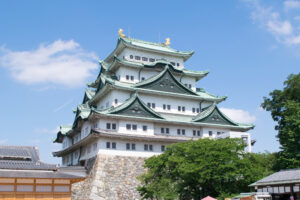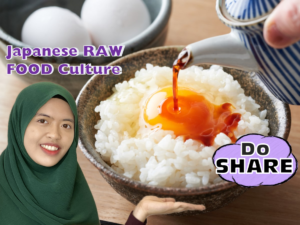Keeping Japanese doll craft alive, From Japan to the world
Hina, Oyama, Ichimatsu dolls… Keeping people and cultures connected through making dolls that fit people lifestyles.
Hina dolls are said to have appeared among the Japanese nobles in the Heian period (794-1185). Hina dolls have long been a part of the unique Japanese culture-to decorate on Doll’s Festival (Hinamatsuri), hoping for the healthy growth of the children.
Koubou Shouju is a well-established doll workshop, cherishing such traditional culture while continues to make Hina dolls. Its passion for making dolls out of the box opens up new possibilities for the craft.
Let’s hear from its representative, Koide Shouju–who has poured her heart and soul into making dolls like her own child–about her passion for the craft and her sights ahead.
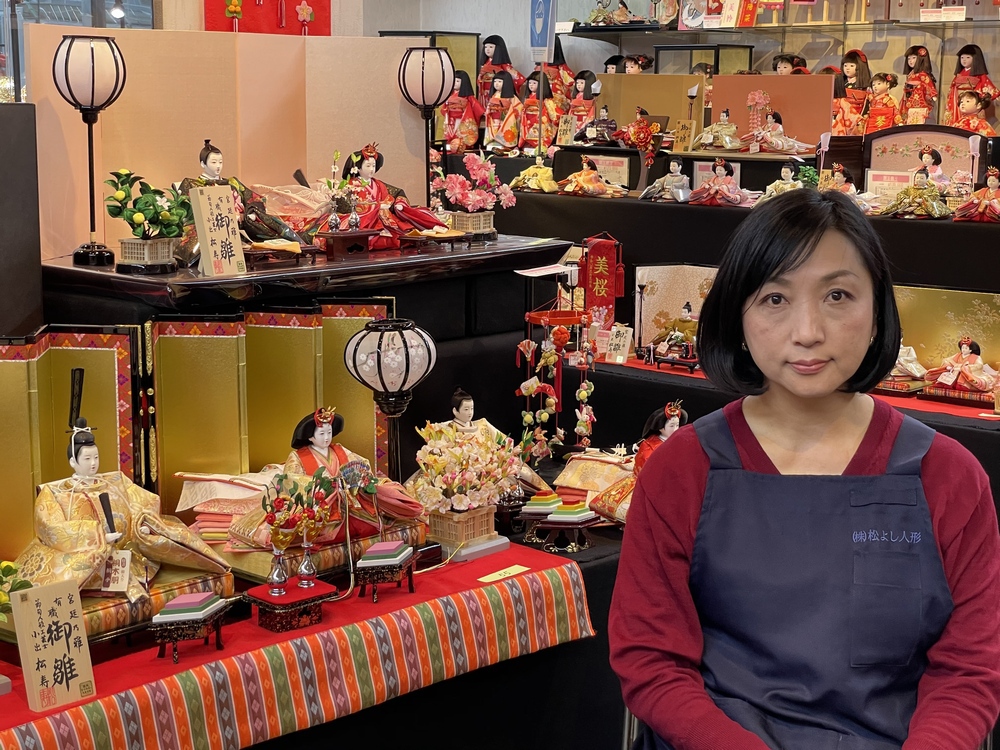
In 1960, our predecessor, Megumi Koide, founded “Koubou Shouju”. In 1963 the chairman Shouju Koide took over, and the business thrives to this day. We’ve been crafting handmade Hina dolls for 60 years. We make Hina, Ichimatsu and ball-jointed dolls, ranging from traditional to current styles.
Parts to make Hina dolls are done by different craftsmen. For Ohinasama*, the head-maker (kashira-shi) makes the head, the hair-planter (kamitsuke-shi) attaches hair to the head and so on. They work in workshops or at home.Facial features are diverse too.
*Ohinasama (female) & Odairisama (male): they are the central figures of the hina dolls. Placed on the top platform of the display (hinadan). They represents honoured palace officials = honoured dolls.
We have the head-maker drawing features that only Shouju offers, so you can choose from faces with long slit eyes, plumpish friendly faces, etc.
We produce several thousand pairs of the female Ohinasama* and the male Odairisama* every year. Our production scale is among the best in western Japan.
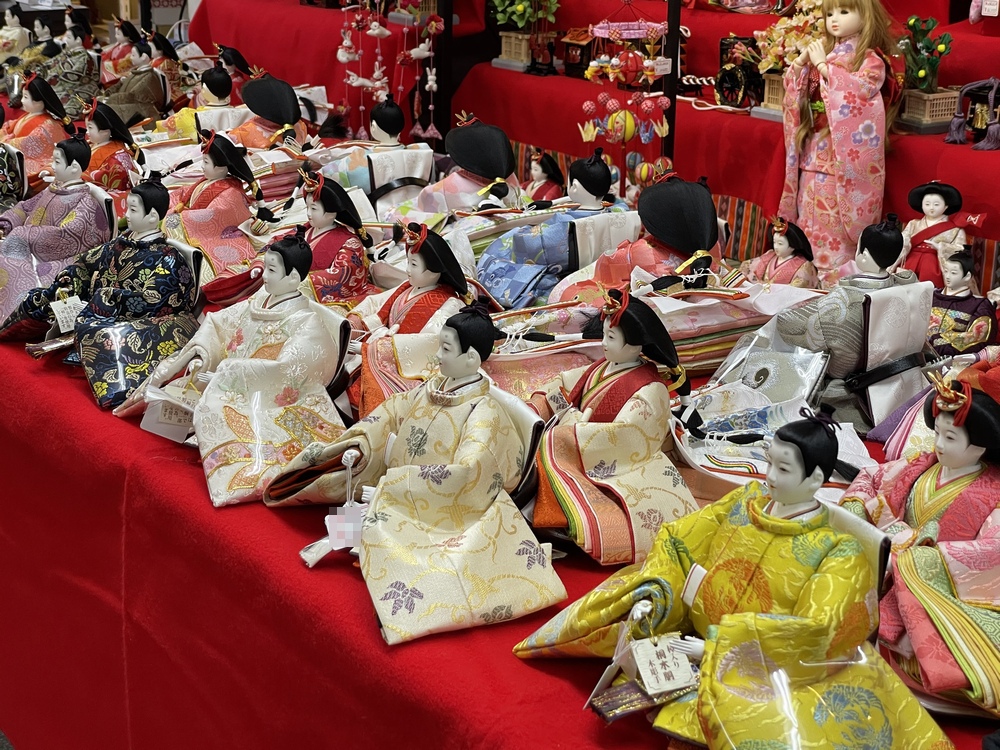
Years of Mastery and Finesse
When you look at the dolls carefully, you can truly feel the love and care that has gone into each one of them.
Doll’s costumes are sewn by selecting the fabric and colour, adjusting every detail to how the pattern will look. The sewing is done in a way that the seams are not visible. Preventing any misalignment of fabrics and ensuring the distance between patterns is the same.
For costumes, we also use overseas fabrics such as Vietnamese embroidery and Italian Jacquard. There are also fabrics from France and Brazil.
Italy, in particular, is rich in design fabrics, so rich that it is said that there is a designer for every loom. That’s why we pick up various materials from those.
A Breakthrough for Traditional Crafts that only Osaka Can Give
Beautifully woven and designed costumes adorned by Ohinasama. These costumes are studded with Swarovski*, a shimmering evolution that was unthinkable in the past.
*Swarovski: a premium brand of crystal founded in 1895 in the Tyrol region of Austria.
Swarovski has been attached to garments for over a decade. Our chairman didn’t mind; he found it intriguing!
We quickly went to Swarovski Japan HQ and got official permits to use them in our work. We worked on making our costumes shimmer softly by using matching colours or smokey colours.We’re always trying to open our horizons and try new things. In some ways, being in Osaka allows us to challenge ourselves easier. We come up with new costumes every year, with different designs and new materials.
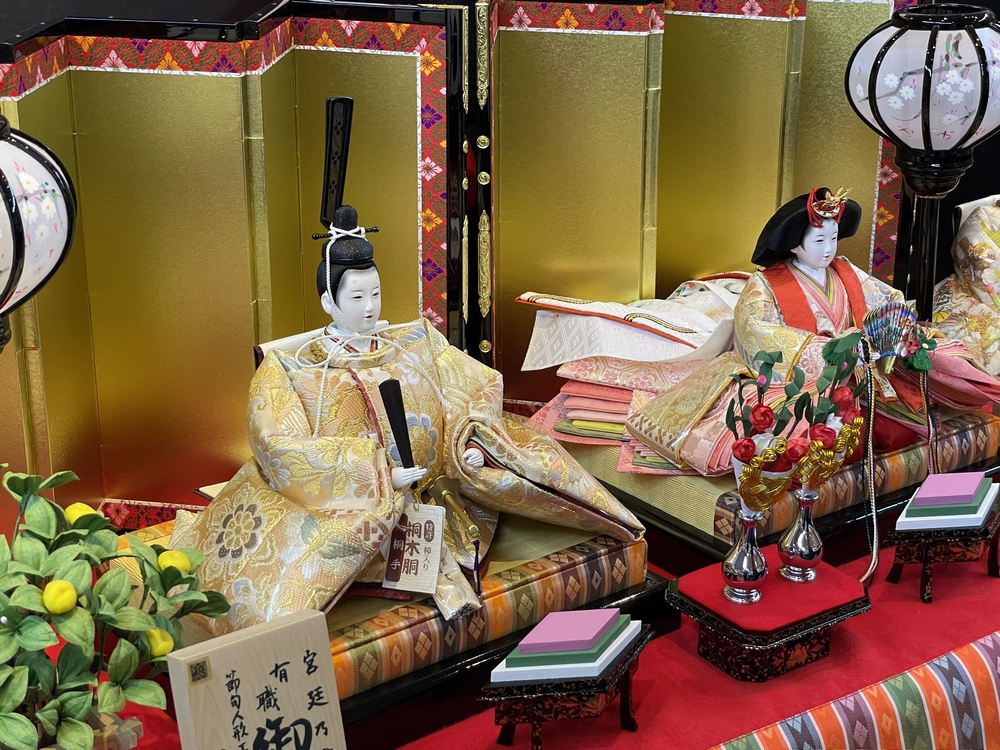
Lovely and Elegant “Aya”
Crafted by Shouju’s highly skilled techniques, AYA is a ball-jointed doll made of hard plastic and soft vinyl. Lovely face with plump cheeks and smooth skin. You can customize it with different clothes and wigs.

Born after a series of discussions with the sculptor on how we wanted the face and style. Every detail is made with great care both for the body and the costumes. The sleeves are gathered (sewing technique) to create a three-dimensional effect…From tailoring to sewing, we carry out strict inspections to ensure the quality of our work.
I believe that dolls have an underlying sentiment of ”beauty” and ”cuteness” that women can share. I hope the dolls can play a role in sharing those feelings.
May It Lasts To The Next Generation
Nowadays, we offer tours of our studio to students on school trips and workshops on tsumami kanzashi*, helping to pass on our culture to the younger generation. With a warm smile, Michiko says that making dolls and being in contact with Japanese culture fosters a sense of comfort and love.
*Tsumami Kanzashi: a traditional Japanese craft on making flower-decorated ornamental hairpins.
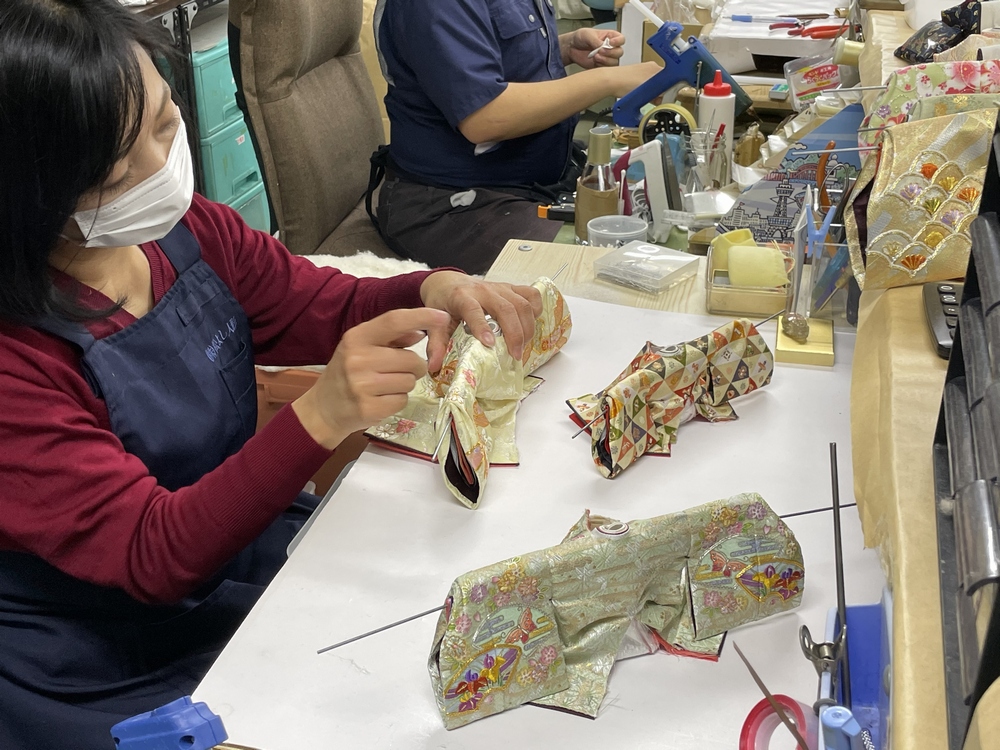
We would love to take our work abroad. Of course, we want people to know about Japanese dolls, but it would also be a chance for Japanese people to see that there’s a culture and craft they can be proud of abroad. I believe this could be an easy way to encourage people to anew their love for the country they were born and raised in.
In Japan, Hina dolls are an ode to others, celebrating for them, celebrating with them. Memories of such childhood celebrations will stay with you forever and will be passed on.
I would like to continue making dolls so that such memories will never die. Giving people something to talk about for generations to come.
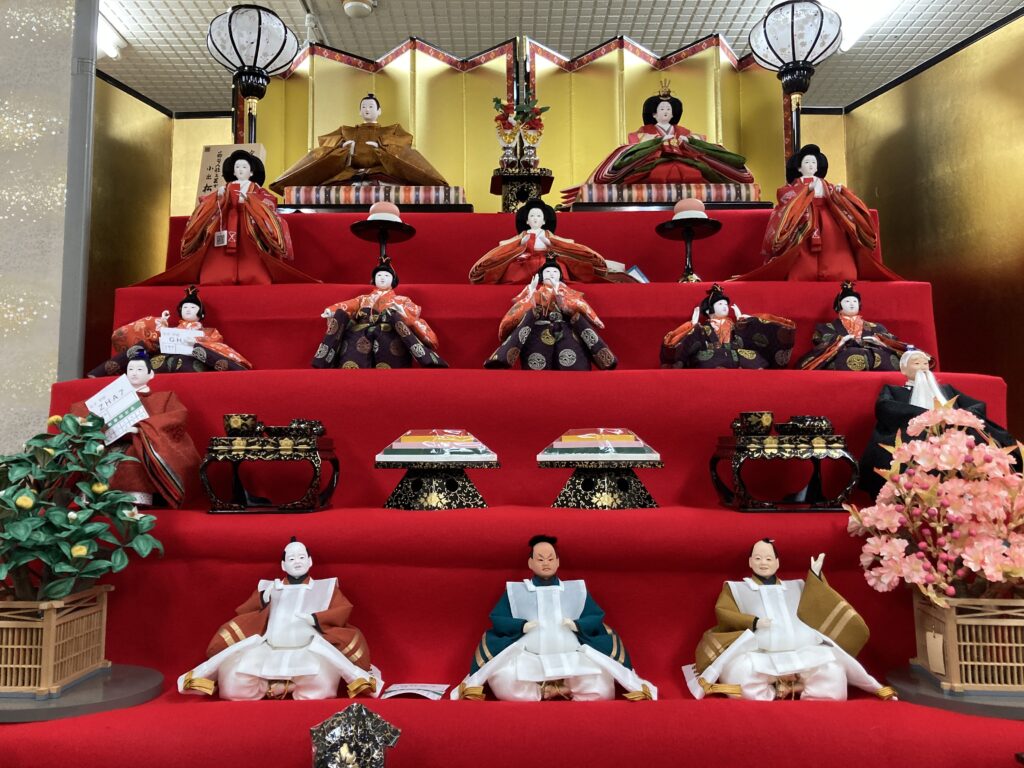
Even if times change, the culture inherited and the sentiments rooted in our hearts remain the same. As they hope the dolls will continue to bring people and culture together—this interview showed us a glimpse of the future.
Groovy Japan introduces Japanese products and services for the Islamic market in English and Japanese. Follow us on our social media and keep up-to-date with the latest news.

